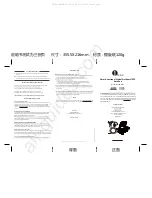
14
Pressurization and Startup
5 Pressurization and Startup
Before Beginning
Pressurization:
Important
Shively Labs will not accept responsibility for antenna failure after
operation without proper purging or positive pressure of dry air or
dry nitrogen.
CAUTION
When pressurizing the system, never use a "garage" air compres-
sor, as it will not clean the air and will blow both moisture and
contaminants such as oil and graphite into the coaxial system.
Be sure to use a good quality pressure gauge which will read
accurately in the 10 - 20 psig range; don't depend on the cylinder
gauge, which will not be accurate at a low pressure.
Do not over-pressurize the system; it takes time for the entire sys-
tem to fill with the new pressure and the pressure gauge to stabi-
lize.
CAUTION
If all moisture is not removed from the interior of the system, it
will condense when the weather cools. The condensed moisture
(water) will cause arcing and permanent physical destruction of
the coaxial system, including the transmitter output network.
CAUTION
You must blow dry gas
through
the system, not just maintain a
pressure. The gas
volume
accomplishes the purge.
CAUTION
Never operate the antenna system without proper purging and
constant positive dry gas pressure.
CAUTION
Although initial characterization is at your discretion, we strongly
recommend it as the best way to identify both initial problems and
possible future system damage.
Pressurization
Procedure
After the antenna is installed and all lines are connected, it is neces-
sary to check the system for leaks, purge with dry gas to remove all
moisture, and leave the system pressurized with dry gas to avoid future
infiltration of moisture. These steps must be taken before RF power is
applied to the system.
Step 1. Leak Testing
a. Connect a source of dry gas (cylinder nitrogen or air from a compres-
sor-dehydrator) to the system as shown in
Figure 7
on page 15.
b. Be sure to include a good quality gauge which reads accurately in the
5 - 20 psig (35 - 135 kPa) range; don't depend on the cylinder
gauge, which will not be accurate enough in this pressure range.
Summary of Contents for 6017
Page 4: ......















































